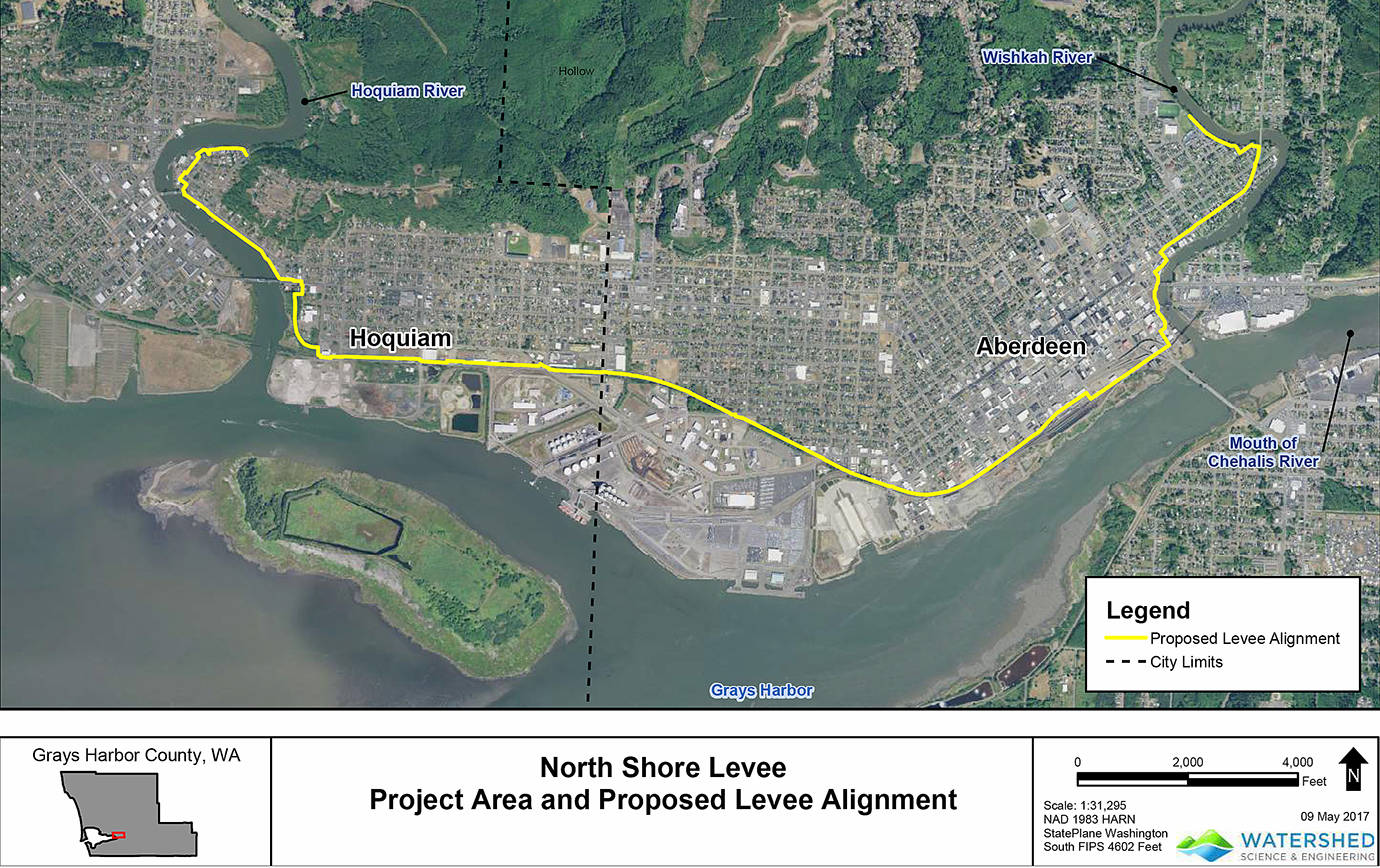The Aberdeen City Council overwhelmingly approved a $7 million commitment to the North Shore Levee project from the armory fire insurance settlement.
But some council members expressed concern over the use of armory funds they felt were specifically intended for the development of a new museum space.
Council member and Public Works Committee chair Tiesa Meskis told the council prior to the vote that the city was not “writing this blank check for $7 million” out of the insurance funds.
“We are simply reserving those funds for a project, and any time something comes forward that needs to pull from those funds it’s going to come back before the council for further approval.” Meskis added, “And right now, the only funding source that we can make that commitment from is the armory funds.”
The $7 million commitment, along with the $7 million commitment to the Gateway Center recently approved by the City Council and several other distributions related to the museum collection — including the $1 million in the settlement specifically for the collection being transferred into the city’s museum fund — and other items, leaves less than $4 million of the $23 million settlement “available” for other projects.
Council member John Maki has been vocal about his belief the armory fire insurance settlement should be used for a museum.
“I don’t like the idea of using museum money to support the Gateway and the levee,” he told the council. “I think that money should have been (used) to build us a museum. That’s what the insurance money is for, and the idea of using this money for other projects I will totally vote no on every time.”
“I just really, really cringe at spending museum fire money for the levee and stuff like that,” said council member Margo Shortt. “But it’s a really easy way to get some money for the levee. But that insurance money came as a result of the museum fire and I think we should save it for that.”
Meskis said what City Engineer Kris Koski told the council last week during a report on the levee project was the request for funding would be made.
“The city has to show it’s willing to put some skin in the game, we have to show that we’re willing to put some money forth in order to get some bigger grants,” said Meskis, adding the levee project is “going to increase our economic base in the city so that we can gather more funds and put more funds aside so we can do a museum.”
He said the settlement money came out of the museum fire tragedy, but, “if we try to build a museum but leave the rest of the city underwater I think that’s a poor decision.”
Maki came back, “I still disagree. Why do we have to use the museum money for that?”
Council member Alan Richrod said he agreed with Maki “in the grand scheme of things. Aberdeen not having a historical museum is really akin to Westport not having boats. However, I am inclined to go ahead and approve of this with the understanding that we can come up with the money for a museum when we need it because Aberdeen still has a first-class bond rating. So council member Meskis is right, if the city’s underwater the museum is not going to help much.”
Mayor Pete Schave explained that the bulk of the settlement money was for the armory building itself. The $1 million specifically designated in the settlement for the museum collection was transferred earlier this year into the museum fund.
Council member Kati Kachman asked Public Works Director Rick Sangder to provide a more detailed description of what the council was specifically voting on, the $7 million levee commitment.
Sangder said the city is seeking $30-$50 million in funding for construction of the levee. “If we do not have skin in the game we are not going to get the funding that we need in the Legislature in the next biennium to get us to the point where we can start construction within two years,” said Sangder.
Last year, the city hired a lobbying firm to help secure funding for the levee and other projects. That firm has instructed the city the local commitment is critical to getting the funding needed from state and federal sources.
“Everyone keeps saying this is museum money,” said Sangder about the settlement funds. “The city had a building, and the museum was a tenant. Just because you’re a tenant doesn’t mean that if the building burns down you get all the money. That’s not how it works. This is city money.”
Sangder said he understood the desire for a museum and was not trying to speak ill of the use of funds for it, but the levee, designed to take thousands of properties out of the federal flood map, is a critical project.
“In order for us to stay on track, we have to have a commitment. And if we don’t have a commitment, then we are set back. We miss the next biennium for funding,” said Sangder. “And our lobbyists have given us a clear path to get funded,” the commitment.
A roll call vote to simply accept the Public Works report about the request was called for. In the end, only Maki, as promised, voted no. When Shortt’s name was called, she said, “The Public Works Director convinced me” and voted yes. The resolution needed to make the request official was passed with no audible “no” votes.


